[ad_1]
Those who knew El Limoncito remember a welcoming and industrious community of lime farmers who poured their sweat into the soils of Mexico’s sun-baked backlands in search of a better life. Then the drug conflict exploded and everything changed.
The village’s primary school found itself on the frontline of a six-hour Monday morning gunfight that sparked a ferocious two-year struggle for control of the area.
As gunmen from two rival cartels – armed with .50-calibre sniper rifles and improvised tanks – fought pitched battles for El Limoncito’s dusty streets, locals fled, leaving behind everything they had. “It was all-out war,” remembered one former resident, who asked not to be named for fear of being killed.
El Limoncito’s deserted schoolhouse became a base for fighters from one of the warring factions – then a blood-spattered graveyard after their enemies stormed its classrooms in an attempt to retake the village. Family homes became makeshift forts used to spray invaders with gunfire. The pale yellow chapel was peppered with bullets and robbed of its flock.
“It’s appalling – we’re in the middle of a war we never asked for,” said Father Gilberto Vergara, a Catholic priest from Aguililla, the surrounding municipality in the western state of Michoacán.
Vergara said it was impossible to know how many were killed in the battle for El Limoncito since the gunmen carried their fallen comrades back into the hills. But the carnage left crystal clear the intensity of the conflict raging in Mexico’s hinterlands after decades of state abandonment and cartel control.
“The bullets are real – and they kill,” the priest lamented. “The war between them is a war in every sense of the word – and this is a battlefield.
“The toll goes far beyond the bullets you see on the ground,” Vergara reflected. “You look around and see the abandoned crops. The people gone. Areas where people lived happily have become regions of fear.”
Fifteen years have passed since Mexico’s then president, Felipe Calderón, launched the ill-fated “war on drugs” here in the Tierra Caliente (Hot Land) – a strategically positioned sweep of mountains and river valleys that has been a major hub of drug trafficking and production since the 1980s.
Calderón vowed in December 2006 to obliterate Mexico’s mafias, “for the new generations of Mexicans who have the right to a safer and better Mexico”. “We will give neither truce nor quarter to the enemies of Mexico,” he told thousands of troops tasked with blitzing the cartels.
Fast-forward to 2022, however, and little seems to have changed, bar the names of some of the cartels and kingpins locked in a vicious squabble for control of smuggling routes like the one on which El Limoncito has the misfortune to lie.
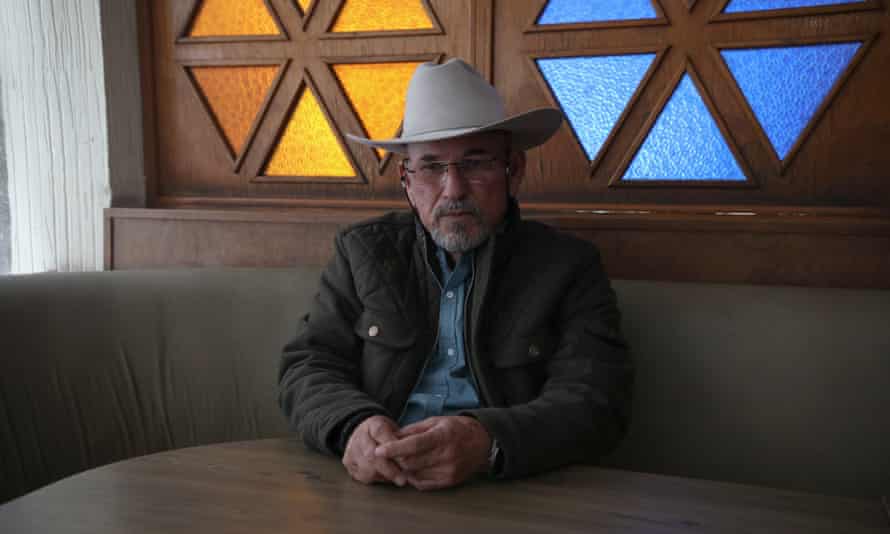
Hipólito Mora, a lime farmer famed for helping launch Mexico’s “self-defense” vigilante movement nearly a decade ago, claimed today’s situation was even worse than in 2013 when he urged residents to take up arms against the Knights Templar cartel.
“Things are so bad that here in the capital Morelia … there are four, five, six, sometimes even seven murders a day,” Mora complained, as rifle-toting bodyguards guarded the hotel where he was holding court over a cup of chamomile tea.
“If this is happening in Morelia, which is full of security forces, just think what’s happening in other municipalities,” Mora added.
El Limoncito, three and a half hours south-west of Morelia, has been turned into a ghost town by the two-year turf war between a coalition of crime groups called the Carteles Unidos and the fast-growing Jalisco New Generation cartel (CJNG) whose leader, El Mencho, was born nearby.
Every single one of the bungalows on the village’s rocky main drag is vacant, each empty room filled with reminders of heartache and horror. An abandoned game of Monopoly, a class photo from a school now in ruins, a copy of the Burt Reynolds family comedy Cop and a Half, a toothbrush and a mouldy jalapeño pepper on a Styrofoam tray.
The derelict residence of a watermelon farmer – one of hundreds of thousands of Mexicans uprooted by violence in recent years – is guarded by a statue of Our Lady of Guadalupe. But the Virgin’s face and hands appear to have been shattered by gunfire and the wooden door lies open. Inside, gangsters have scrawled their groups’ names on to a bookshelf in red ink and what looks like blood. Spent .50-calibre cartridges litter the undergrowth outside, the markings suggesting they came from an ammunition plant in Missouri.
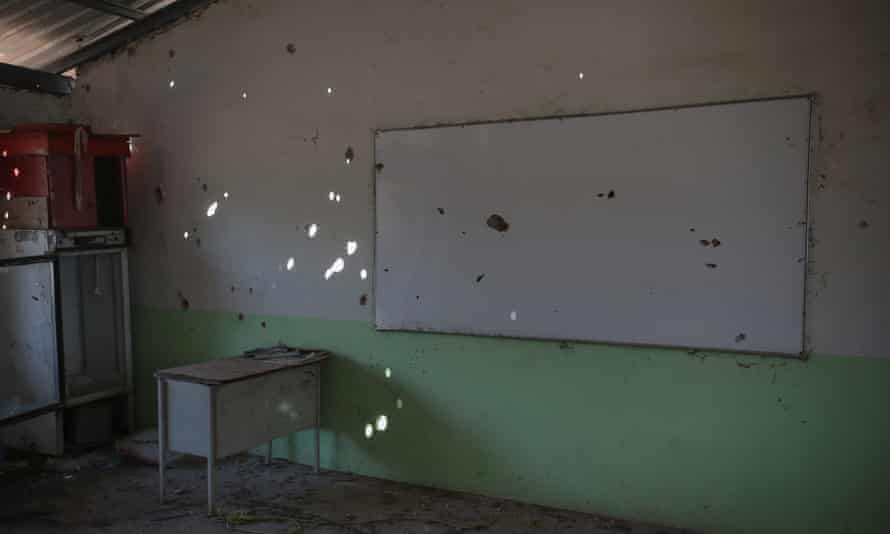
El Limoncito’s chapel resembles a planetarium: its sanctuary dotted with constellation-like specks of light as the sun pours in through dozens of bullet holes in the walls and roof. In the creche, an intruder has scribbled a tribute to one of Mexico’s most wanted men. “100% behind The Lord of the Roosters,” it says, in reference to El Mencho’s nickname.
Dusty copies of Grimms’ Fairy Tales share school classrooms with bullet-pocked whiteboards and walls. Green and red smiley faces remember the children in the teacher’s good or bad books when class last sat. José, Juan and Miguel had been naughty. Itzamara and Byron had been nice.
Mexican soldiers who had occupied the area the previous week urged reporters not to venture into the fields beyond the village’s last home, where a machete lay beneath orange and purple graffiti exalting the Jalisco cartel. Three days earlier an elderly farmer had died in the next village after stepping on an improvised landmine. The region’s untended groves were rumoured to be strewn with such devices.
Six days after those troops arrived there was an edgy calm, as soldiers set up camp in the school.
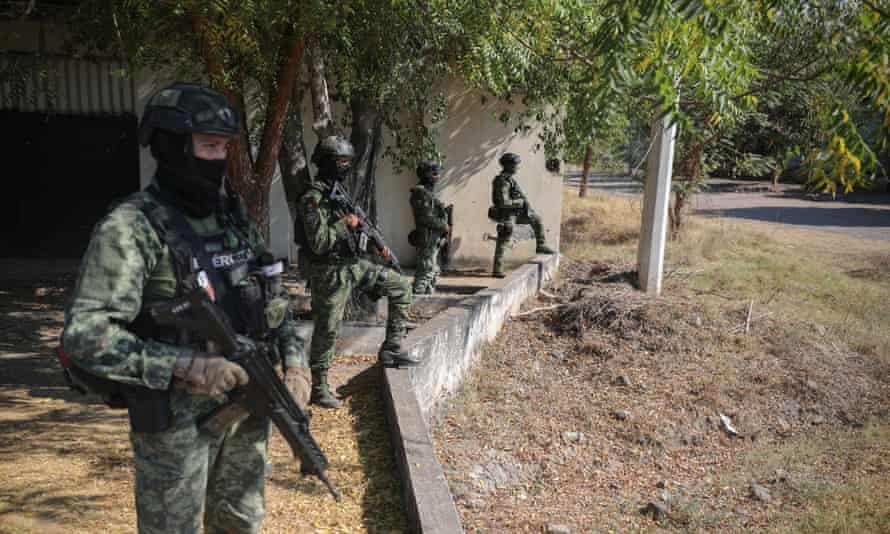
Cartel triggermen had abandoned their roadblocks and retreated into the mountains to avoid a confrontation. Humvees mounted with Minimi machine guns patrolled the highway that is used to move vast quantities of drugs through Mexico and on to the US.
Anxious locals fretted that the expulsion of one cartel might simply clear the way for another to seize power, noting how security forces had served such a purpose in the past.
In Aguililla, a picturesque town 25 miles to the south, troops had occupied the main plaza and were offering free haircuts and check-ups in an effort to win over a community that has spent decades under cartel control.
Mexico’s president, Andrés Manuel López Obrador, has promised to fight crime with “hugs, not bullets” – and here was his flagship policy in action. A yellow army banner hung from the town’s bandstand offering “chats to avoid the proliferation of the use of firearms”.
“You can’t put fire out with fire,” the president, best known as Amlo, said recently in defense of his attempt to bring peace with social programs not deadly military raids.
Quick Guide
Mexico’s evolving war on drugs
Show
Calderón sends in the army
Mexico’s “war on drugs” began in late 2006 when the president at the time, Felipe Calderón, ordered thousands of troops onto the streets in response to an explosion of horrific violence in his native state of Michoacán.
Calderón hoped to smash the drug cartels with his heavily militarized onslaught but the approach was counter-productive and exacted a catastrophic human toll. As Mexico’s military went on the offensive, the body count sky-rocketed to new heights and tens of thousands were forced from their homes, disappeared or killed.
Kingpin strategy
Simultaneously Calderón also began pursuing the so-called “kingpin strategy” by which authorities sought to decapitate the cartels by targeting their leaders.
That policy resulted in some high-profile scalps – notably Arturo Beltrán Leyva who was gunned down by Mexican marines in 2009 – but also did little to bring peace. In fact, many believe such tactics served only to pulverize the world of organized crime, creating even more violence as new, less predictable factions squabbled for their piece of the pie.
Under Calderón’s successor, Enrique Peña Nieto, the government’s rhetoric on crime softened as Mexico sought to shed its reputation as the headquarters of some the world’s most murderous mafia groups.
But Calderón’s policies largely survived, with authorities targeting prominent cartel leaders such as Sinaloa’s Joaquín “El Chapo” Guzmán.
When “El Chapo” was arrested in early 2016, Mexico’s president bragged: “Mission accomplished”. But the violence went on. By the time Peña Nieto left office in 2018, Mexico had suffered another record year of murders, with nearly 36,000 people slain.
“Hugs not bullets”
The leftwing populist Andrés Manuel López Obrador took power in December, promising a dramatic change in tactics. López Obrador, or Amlo as most call him, vowed to attack the social roots of crime, offering vocational training to more than 2.3 million disadvantaged young people at risk of being ensnared by the cartels.
“It will be virtually impossible to achieve peace without justice and [social] welfare,” Amlo said, promising to slash the murder rate from an average of 89 killings per day with his “hugs not bullets” doctrine.
Amlo also pledged to chair daily 6am security meetings and create a 60,000 strong “National Guard”. But those measures have yet to pay off, with the new security force used mostly to hunt Central American migrants.
Mexico now suffers an average of about 96 murders per day, with nearly 29,000 people killed since Amlo took office.
Father Vergara was skeptical such tactics alone would work in a region so immersed in violence. “I agree with Amlo on many things. He says he’s a pacifist and I consider myself a pacifist too. But I also believe that you react to what you have before you. Hugs? Yes, I’d hug someone who comes in peace and is calm. But if someone is fighting me with a gun in their hand, I’ll disarm him first and then be able to give him a hug.”
Mora, the former vigilante leader, voiced satisfaction troops were “liberating” areas such as El Limoncito from cartels whose armories now include explosive-laden drones and Frankenstein-like tanks known as “monstruos”.
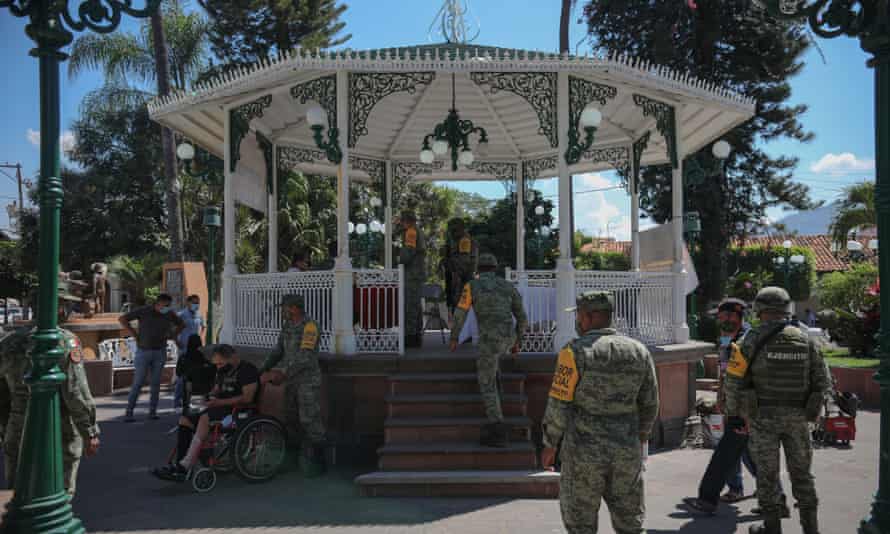
But he also doubted López Obrador would succeed where previous presidents had failed. “I don’t believe there’s any way of putting an end to such violence in the short term,” Mora admitted, noting horrifying levels of bloodshed in states such as Zacatecas, Guanajuato and Colima – not to mention the resort city of Cancún near to where a British businessman was shot dead last weekend. “It’s incredible – not even the beach is safe these days,” Mora said.
In some Michoacán farming communities such as Pareo, just north of the hot land, locals have long since abandoned hope of government protection and again created their own heavily armed militias to keep out the cartels. “Here we love life … Out there it’s fucked up,” said a vigilante commander as he showed off one of more than 80 pillbox-style fortlets his troops use to defend Mexico’s avocado-growing heartlands from the narcos.
Amlo has celebrated the army’s hot land occupation and said displaced families are starting to return home – but locals dispute official claims the army is now completely in charge.
“They’ve made themselves present – but taking control will require much more work,” said Vergara. “Are the organized crime groups no longer here? No – it’s just that we can’t see them. They haven’t just suddenly evaporated. They are people – and they are somewhere.”
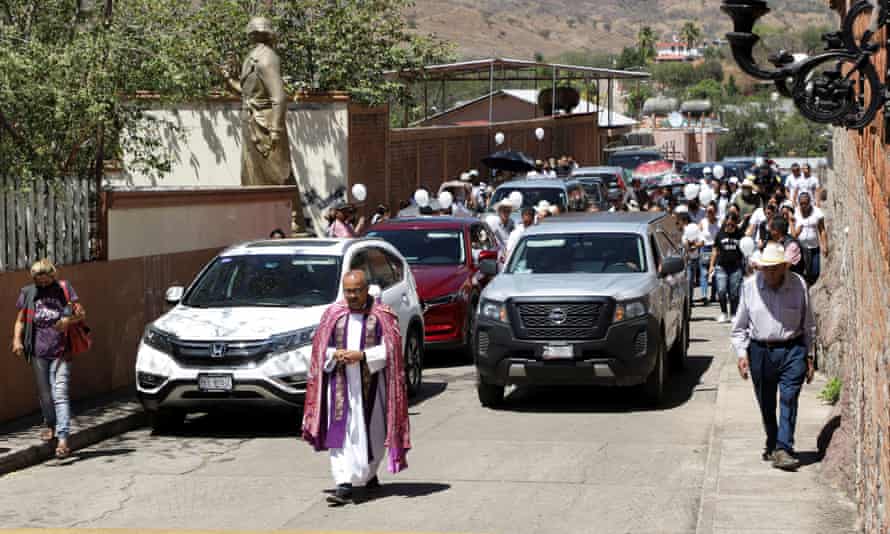
The priest was right. Three weeks later, the cartel killers reappeared, shooting Aguililla’s mayor dead in broad daylight near its occupied main square.
As mourners packed the town’s 19th-century church to lament Mexico’s 21st-century ordeal, Vergara fought back tears and urged them to seek solace in God. “What we have always asked for, and ask for now, with such faith … is that this killing stops,” the priest said before the mayor was buried to the sound of mariachi.
A few miles out of town, residents had built a roadside shrine to Jude the Apostle, the patron saint of desperate cases and lost causes. “Most holy apostle,” said the prayer painted on its side. “Make use, I implore thee, of the special privilege that has been granted to thee, of bringing quick and visible help when all hope has been lost.”
[ad_2]
Source link













